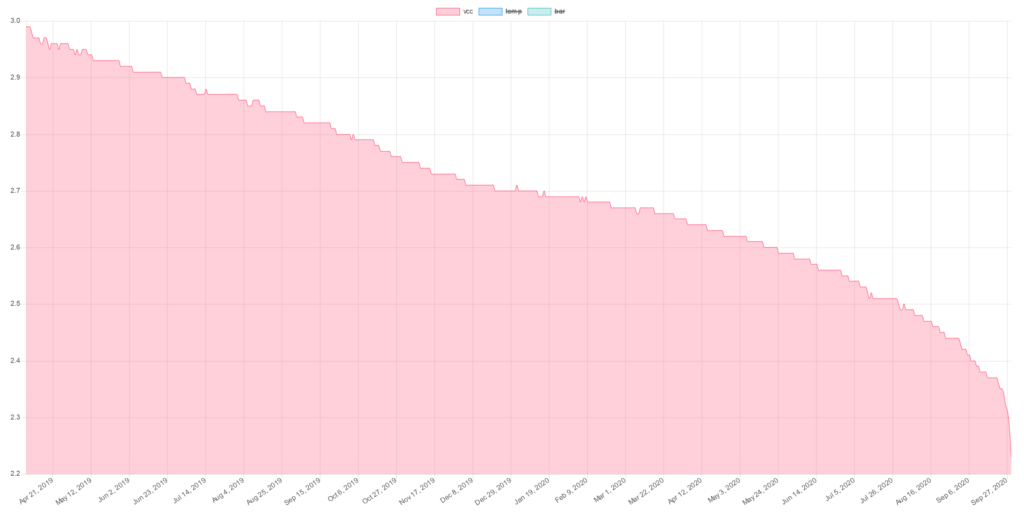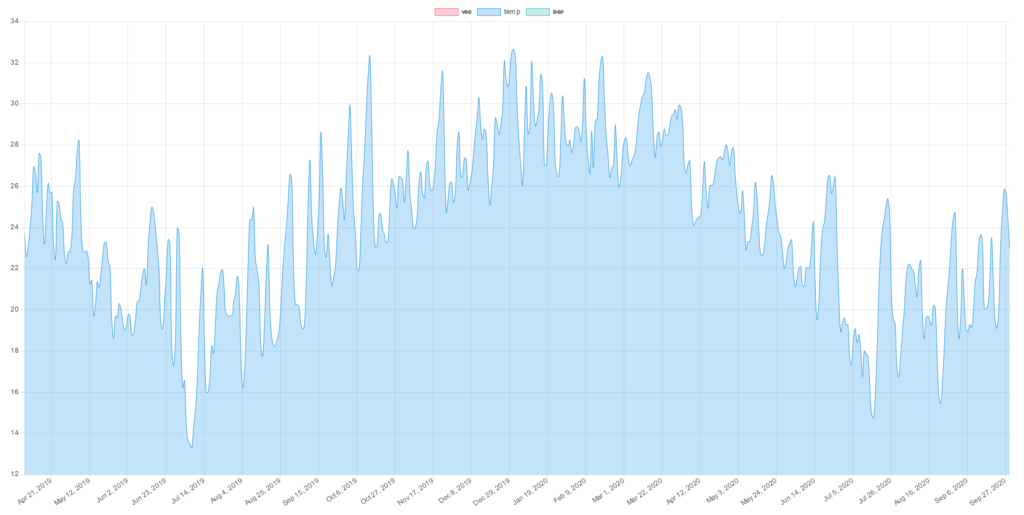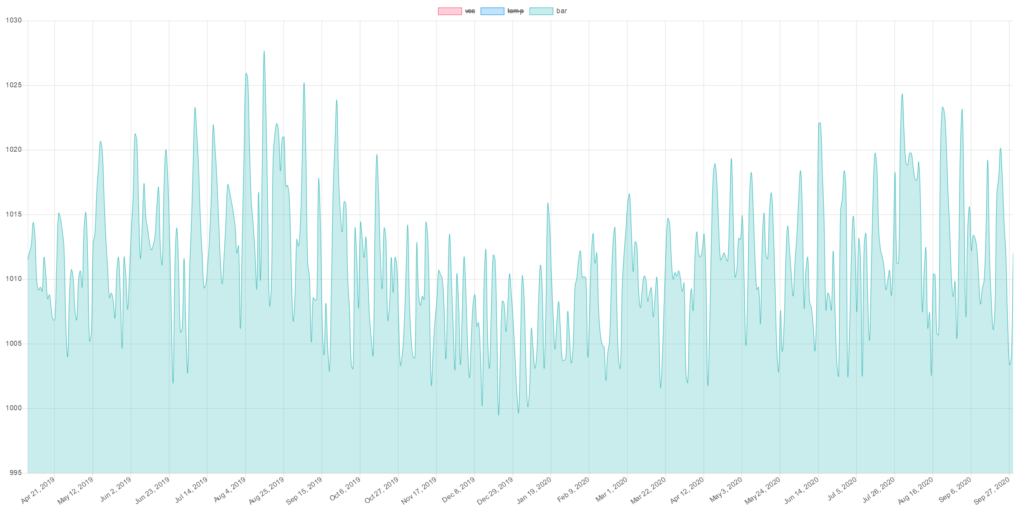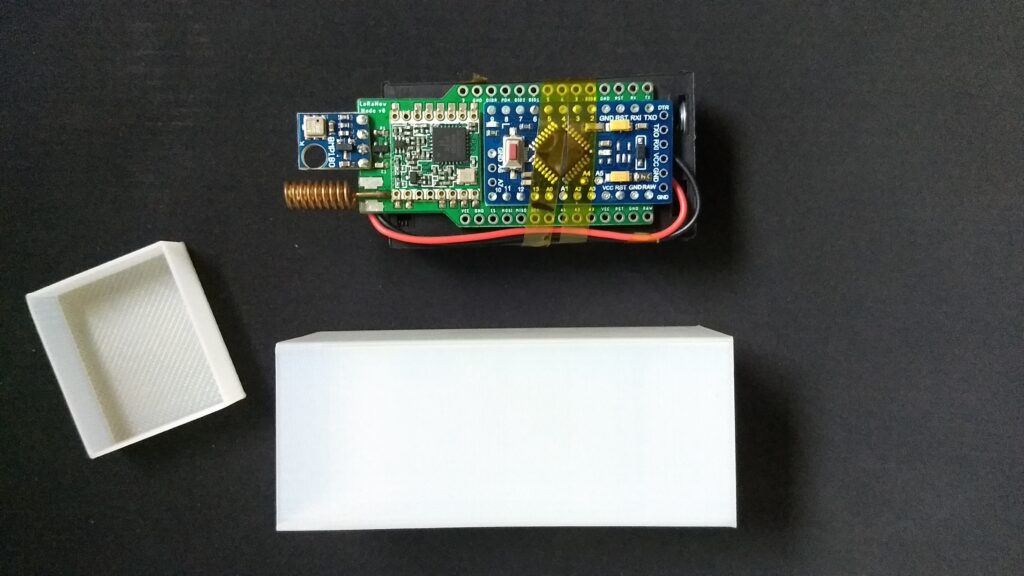In April 2019 I installed a node here at home!
The goal was to see how long a battery-powered Arduino stays online measuring the temperature and sending this data through LoRaWAN.
After 89357 data sent to The Things Network (TTN) the Node stopped sending since the battery ran out, which gave 542 days only powered by two AA batteries.
In addition to measuring temperature and pressure using a BMP180, the Node was also measuring battery voltage, which generated this voltage graph over time.

The first data received was on April 3, 2019, but I had to restart the board to update the firmware that was made on April 6, 2019, after that, I didn’t touch the device anymore. It was thrown in a drawer here in the laboratory.
Disregarding those three days that are not on the chart. You can see that the battery voltage dropped linear until December 2019, pausing at 2.7 volts and then starting to drop exponentially.
It is possible to note that in July 2020 the battery was already at the level of 2.5 Volts which is a voltage level that the two AA batteries are about to run out. Then the voltage dropped quickly, the last data received with the 2.15 Volt on September 29, 2020.
Below are the temperature (Blue) and pressure (Green) data in two graphs.


For the temperature, it is notable that in the month of July we have the winter and December the summer, in this case, I am in the south of Brazil. On the pressure I don’t see any very relevant results, it seems that in the summer the pressure on average was lower than in the winter. Remembering that the values were not calibrated and consists of the temperature and pressure inside the lab drawer

I will leave the data link in JSON if anyone is interested, I know there are some points missing since I was using the TTN system along with The Things Indoor Gateway (TTIG) that I won when I visited The Things Conference in February 2019, I remember for a few months that the TTN system was very unstable and offline

There are 3 days left in the month of June 2019, Node even gave rejoin which zeroed the counter of the LoRaWAN package, after that day it remained connected and ended with the counter of 71086.
A nice point to comment is that the sending of the data was every ~ 10 minutes which is certainly a very high frequency to be forwarding data through LoRaWAN, if the sending time was longer the battery would certainly extend for much longer.
It is the link of the project with the source code and all the data collected!
See yaa!
